Lizards in Colorado are abundant with around 20 species residing in the state. These species comprise both native North American lizards and invasive ones. Within Colorado’s borders, there are over 50 reptiles, including turtles and snakes, contributing to the rich biodiversity of the state.
Among reptiles, lizards demonstrate a stunning diversity, albeit with species that often look remarkably similar. Discerning between different lizard species involves understanding their unique behaviors, colors, patterns, sizes, ranges, and preferred habitats.
In this article, not only will we explore the lizards found in Colorado, but we’ll also delve into informative details about each species. Contributing to the balanced ecosystem, the lizards of Colorado represent a fascinating segment of the state’s animal life.
Table of Contents
Lizards in Colorado
Crotaphytidae
1. Common Collared Lizard

- Experience Level: Intermediate
- Family: Crotaphytidae
- Scientific Name: Crotaphytus collaris
- Other Names: Yellow-headed Collared Lizard
- Adult Size: 8 to 15 in. (20 to 38 cm.)
- Lifespan: 10 to 12 years
- Average Price Range: $70
Common collared lizards are found in the southwestern United States, and are a species native to Colorado. This lizard lives in rocky desert habitats, but is also found in mountainous regions. Collared lizards are active in the day, seen most in the morning.
This species is large, and has a big head with strong jaws. As a sexually dimorphic species, males have brighter, more vibrant colors. The black collared marking around this lizard’s neck is where they get their name. Common collared lizards have yellow, tan, green, to olive coloring. They can have spots, or a crossband pattern on them.
Collared lizards are very quick, and are able to run up to 21.5 mph (34.6 km/h), and when doing so can run bipedally. Grasshoppers, moths, cicadas, spiders, and smaller lizards are what this species eats.
2. Long-nosed Leopard Lizard

- Experience Level: Intermediate
- Family: Crotaphytidae
- Scientific Name: Gambelia wislizenii
- Other Names: n/a
- Adult Size: 3.25 to 5.75 in. (8.225 to 14.6 cm.)
- Lifespan: 5 to 8 years
- Average Price Range: $20
Long-nosed leopard lizards are found in semi-arid environments, with plants like bunchgrass, creosote bush, and other types of low-scattered plants. This species is found from sea level and up to 6,000 ft (1,800 m). Desert flats with little vegetation is where they are most common.
In Colorado this lizard is one of the largest lizards. They have a white, cream, or gray coloring, with a very long tail. Brown blotches cover this species, which is where their leopard name comes from. In the mating season this species may have reddish spots, or pinkish coloring under their throat.
This lizard is active all day, seen on rocks, and other places basking. They are very quick, and if spotted will freeze to attempt to camouflage. Small lizards, insects, and rodents are what this species preys on.
Phrynosomatidae
3. Lesser Earless Lizard

- Experience Level: Intermediate
- Family: Phrynosomatidae
- Scientific Name: Holbrookia maculata
- Other Names: n/a
- Adult Size: 4 to 5 in. (10 to 13 cm.)
- Lifespan: 3 to 7 years
- Average Price Range: n/a
Lesser earless lizards are native to the southwestern and central regions of the United States. In Colorado this species is mainly found in the eastern portion of the state. Habitats like shrublands, sandhills, grasslands, and agricultural fields are where this species lives. They are active in the day, mainly found on the ground.
This species gets its name from the lack of ear holes on their head. They have tannish, yellowish coloring, with stripes and blotches on them. In the breeding season males of this species may have blueish undersides. The scales of this lizard are very small, and bumpy.
Lesser earless lizards prey on insects during the day. They mate during the spring and summer, laying up to 12 eggs per clutch. Predators like small mammals, birds, snakes, and larger lizards are what prey on this lizard. This species is common in their range, and overall has a stable population.
4. Texas Horned Lizard
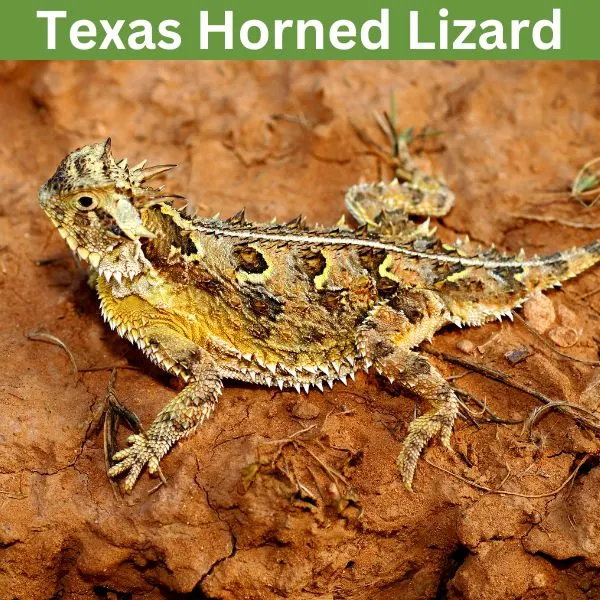
- Experience Level: Advanced
- Family: Phrynosomatidae
- Scientific Name: Phrynosoma cornutum
- Other Names: Horny Toad
- Adult Size: 3.7 to 5 in. (9.93 to 12.7 cm.)
- Lifespan: 5 years
- Average Price Range: $40
In Colorado the Texas horned lizard is one of the several types of horned lizard inhabiting the state. This species is mainly found in the southern United States, but have been introduced to places like Colorado due to the pet trade. Semi-arid, and open habitats with sparse vegetation is the habitat where this species lives.
Texas horned lizards have large bodies when compared with other types of horned lizards. They have horns across their body, with the largest on their head. Tan, yellow, or reddish brown are common colors of this species. Marks like dark blotches, and lines may appear on their face, and back.
Ants like harvester ants make up the majority of this species’ diet. Their color and spikes help them camouflage into their habitat. This species uses its body shape and spikes to defend themselves from predators. They can also squirt blood from their eyes, used to defend themselves from dogs. This species has been on the decline, mainly due to invasive red ants attacking them.
5. Greater Short-horned Lizard

- Experience Level: Intermediate
- Family: Phrynosomatidae
- Scientific Name: Phrynosoma hernandesi
- Other Names: Mountain short-horned lizard
- Adult Size: 6 in. (15 cm.)
- Lifespan: n/a
- Average Price Range: $40
Greater short-horned lizards are native to North America. This species is found in semi-arid mountains, and desert habitats. They prefer places with loose, or sandy soil. They are able to tolerate cold, and can be found at high elevations. This species is active during the day, and is common from spring to fall.
This lizard species has a round and flat body, and is most noticeable from the spikes that appear on their head and sides. This lizard can have various colors, which typically match the habitat they live in. Tan, brown, or gray are common colors for this species, and they have dark spots on their back.
If threatened this species may make their colors more vibrant, and their spiky bodies also make them harder to eat for predators. Ants are what this lizard mainly eats, but they may also feed on other insects like grasshoppers and beetles. Greater short-horned lizards are able to squirt blood from its eyes, which is a tactic specifically used to ward off predators like dogs.
6. Roundtail Horned Lizard

- Experience Level: Intermediate
- Family: Phrynosomatidae
- Scientific Name: Phrynosoma modestum
- Other Names: n/a
- Adult Size: 2.7 to 4.3 (7 to 10.5 cm)
- Lifespan: 7 years
- Average Price Range: n/a
Southeastern Colorado is where the roundtail horned lizard lives, and this species is found in the southwestern United States. Habitats that are rocky, sandy, and semi-arid are where this species is most common. They are active in the day, but may not be seen due to their camouflage.
This lizard has a rounded flat body, with light brown, yellowish, or gray coloring. They have spikes that appear on their bodies, and heads. This lizard’s skink is very bumpy, and lacks any lateral scales. They hunch their bodies which make them camouflage, and look like a rock.
The early summer is when this species breeds, and on average they lay around 6 to 19 eggs. Insects like ants are what this species eats, and they are often found near ant hills.
7. Sagebrush Lizard
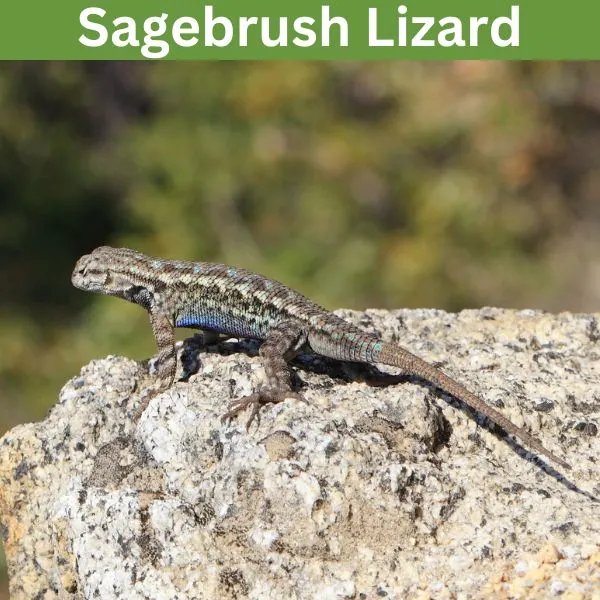
- Experience Level: Intermediate
- Family: Phrynosomatidae
- Scientific Name: Sceloporus graciosus
- Other Names: Sagebrush swift
- Adult Size: 2 to 5.9 in. (5 to 14.98 cm.)
- Lifespan: 5 years
- Average Price Range: n/a
The western United States is where the sagebrush lizard is native to, and in Colorado they mainly inhabit the western portion of the state. This species lives at elevations between 500 to 10,500 ft. (150 to 3,200 m.) above sea level. Shrublands, woodlands, and rocky habitats is where this species lives.
Sagebrush lizards are very similar to western fence lizards, but smaller, and have less scales. This species has olive, brown, or gray coloring. They have roughly keeled scales, with dark markings on their back. The feet of these lizards have long toes and their tails are also long. The belly of this lizard is sometimes blue.
Sagebrush lizards are preyed on by animals like snakes, birds of prey, and carnivorous mammals. This species mate in the spring, and they can be very territorial with other lizards during this season. Insects, and arthropods are what this lizard mainly eats.
8. Desert Spiny Lizard
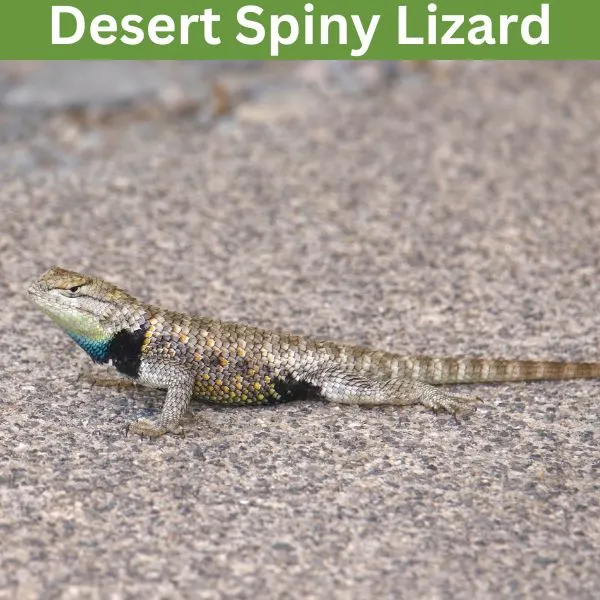
- Experience Level: Intermediate
- Family: Phrynosomatidae
- Scientific Name: Sceloporus magister
- Other Names: n/a
- Adult Size: 2.4 to 5.4 in. (6.3 to 13.8 cm)
- Lifespan: 2 to 7 years
- Average Price Range: $20
Desert spiny lizards are found in rocky, and sparsely vegetated habitats in Colorado. They are often found near streams, and live up to 5,500 ft. (1,676 m.) above sea level. At night this species may hide under burrows, rocks, woodpiles, or in pack rat nests. This species is arboreal, climbing on trees like cottonwood, and yucca trees.
Desert spiny lizards have very roughly keeled scales, with gray to tan coloring. A black collared marking appears around their neck. Their scales can have turquoise, yellow, or black coloring. Males may have bluish coloring on their underside.
This species may change their color to help them better regulate their temperatures. They are most common in the morning, basking on rocks in the sun. Ants, caterpillars, spiders, centipedes, and smaller lizards are what this species eats.
9. Eastern Fence Lizard
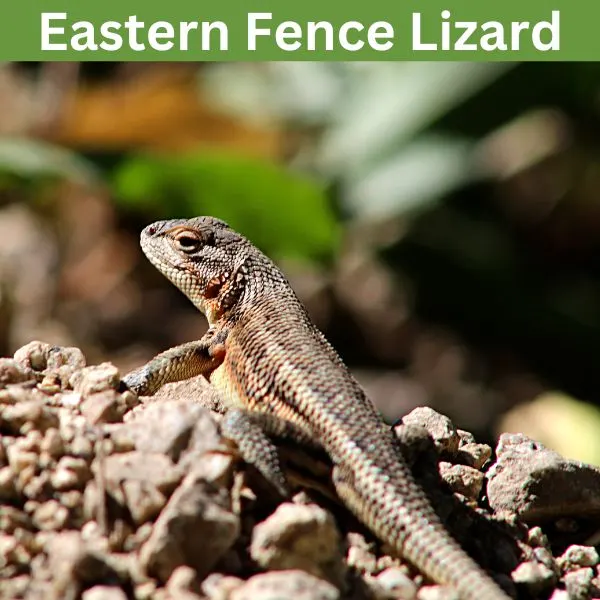
- Experience Level: Intermediate
- Family: Phrynosomatidae
- Scientific Name: Sceloporus undulatus
- Other Names: Prairie lizard, fence swift, pine lizard, gray lizard
- Adult Size: 4 to 7.25 in. (10.16 to 18.41 cm.)
- Lifespan: 4 years
- Average Price Range: $20
Eastern fence lizards are native to the southeastern United States. In Colorado they are found in most of the state, with some regions being absent of their presence. Eastern fence lizards live in shrublands, woodlands, and grassland habitats. They are often found in urban areas, commonly seen on fences.
This species has gray to brown coloring, with roughly keeled scales. They have white bellies, with black specks on their back. The belly, and throat of this lizard sometimes has blue coloring. Eastern fence lizards have sharp claws which help them climb.
Eastern fence lizards are a sit-and-wait predator, which uses camouflage to catch prey. They feed on arthropods, and insects, hunting during the day. When young fire ants are predators this species must look out for. At night this lizard may hide in burrows, or crevices.
10. Ornate Tree Lizard

- Experience Level: Beginner
- Family: Phrynosomatidae
- Scientific Name: Urosaurus ornatus
- Other Names: n/a
- Adult Size: 1.49 to 2.32 inches (3.8 to 5.9 cm)
- Lifespan: 3 years
- Average Price Range: n/a
The ornate tree lizard is native to the southwestern United States, and this species is also found in Colorado. This lizard, like their name suggests, is arboreal. They are found in semi-arid environments, and mesquite habitats. This species is active in the day, often found on trees, or large rocks.
Ornate tree lizards are a medium-sized species, with tan, black, dark brown, or gray coloring. They have slim bodies, with a long tail. Their scales are very roughly keeled, with bands on their tails, and dark blotches on their back. The throats of this species may have yellowish, green, or a blue hue. Females’ throats may be white, yellow, or orange.
Spiders and insects make up the majority of this lizard’s diet. They lay between 2 to 13 eggs, breeding in the spring, or summer months. This species is seen most months but not typically in December. In the cold of winter this species is absent, but will come out on warmer days.
11. Common Side-blotched Lizard

- Experience Level: Beginner
- Family: Phrynosomatidae
- Scientific Name: Uta stansburiana
- Other Names: n/a
- Adult Size: 2.5 to 5 inches (6.35 to 12.7 cm.)
- Lifespan: 1 year
- Average Price Range: $12
Common side-blotched lizards are native to North America, found in deserts, and semi-arid environments. This species has been heavily studied due to its rock, paper, scissors breeding pattern. Lizards of this species may vary depending on the color of their throat, which can be orange, blue, or yellow.
The color of the male’s throat represents what breeding method they use. Males with a blue throat are dominant, while orange throated males are the most dominant. Yellow-throated males rely on sneaking to breed. Each breeding method has its own advantage against the next.
Common side-blotched lizards are native to Colorado, and the western region of the United States. This species is named after the dark blotches that appear on its side. They have robust bodies, with long tails. The scales of this species are roughly keeled, and they have tannish coloring, with dark markings on them.
Insects, and arthropods make up the majority of the common side-blotched lizard diet. It is common for these lizards to be affected by parasites, like mites, and nematodes. Predators of this species include snakes, birds, and carnivorous mammals, and camouflage is the main defense for the common side-blotched lizard.
Scincidae
12. Great Plains Skink
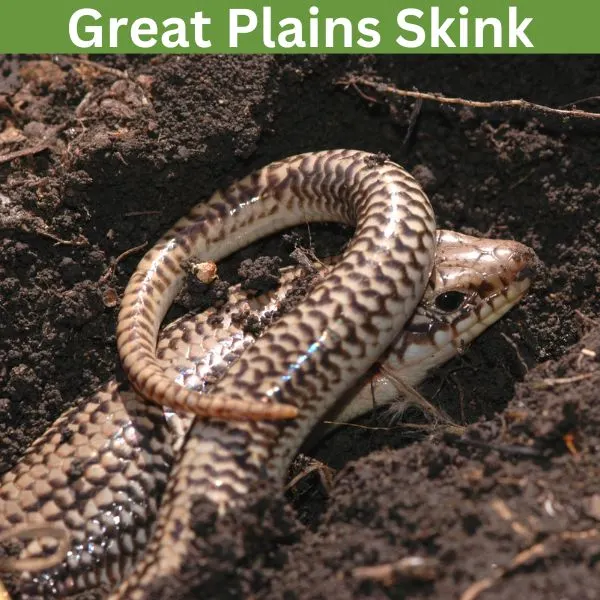
- Experience Level: Beginner
- Family: Scincidae
- Scientific Name: Plestiodon obsoletus
- Other Names: 3.5 to 5.11 in. (9 to 13 cm.)
- Adult Size: 6.5 to 13.75 in. (16.51 to 34.9 cm.)
- Lifespan: 3 years
- Average Price Range: $50
Great Plains skinks are native to Colorado, found in southeastern, and northwestern portions of the state. They live in the foothills of the Rocky Mountains, found near water sources, and irrigation ditches. In Southeastern Colorado this species occurs up to 7,200 ft (1,900 m), while in north Colorado they are found below 4,500 ft (1400 m).
Great Plains skinks are one of the largest skinks in their range, and have very long tails. This species has light gray, to beige coloring. The scales of this lizard are large, smooth, and round. When born this species will have a blue tail, which may fade with age.
Insects like grasshoppers, crickets, and even smaller lizards is what this species eats. They are active in the breed and summer, laying up to 24 eggs. This lizard hibernates underground during the colder period of the year.
13. Many-lined Skink

- Experience Level: Beginner
- Family: Scincidae
- Scientific Name: Plestiodon multivirgatus
- Other Names: Variable Skink, Northern Many-lined Skink
- Adult Size: 3 to 7.5 in. (7.5 to 19 cm.)
- Lifespan: 6 years
- Average Price Range: n/a
In Colorado the many-lined skink is found in the northeastern, and east-central portions of the state below 5,500 ft (1676 m). In the south-central and southwestern regions of Colorado this species is found at a bit higher elevations below 8,500 ft (2590 m). Woodlands, with a moist environment are where this lizard lives.
Many-lined skinks are named after the several black stripes that run down their body. This species is medium sized, with olive, to brown coloring. This lizard has a smooth appearance, with square-shaped scales. They may have reddish coloring around their mouth.
When breeding this species will lay their eggs under places like rocks. Insects are what this lizard eats, and they hunt during the day. The spring to fall is when this lizard is active, and their mating occurs in the spring.
Teiidae
14. Colorado Checkered Whiptail

- Experience Level: Intermediate
- Family: Teiidae
- Scientific Name: Aspidoscelis neotesselatus
- Other Names: Triploid Checkered Whiptail
- Adult Size: 5 to 6 in. (12.7 to 15.24 cm.)
- Lifespan: 4 to 5 years
- Average Price Range: n/a
Colorado checkered whiptails are one of the several whiptail species that live in Colorado. In the state this species is found mainly in the central portions. Habitats this lizard lives in include canyons, hillside, and woodlands near rivers.
As a very slender lizard, this species has a long tail. They have granular scales, with tan to brown coloring. Stripes run down their body from their head to their tail, and they may also have spots, or a checkered pattern on them.
Whiptail lizards can be very different to tell apart, but this species may have irregular stripes, and markings on them. Predators of the Colorado checkered lizard include large snakes, foxes, and birds like kestrels.
15. Six-lined Racerunner
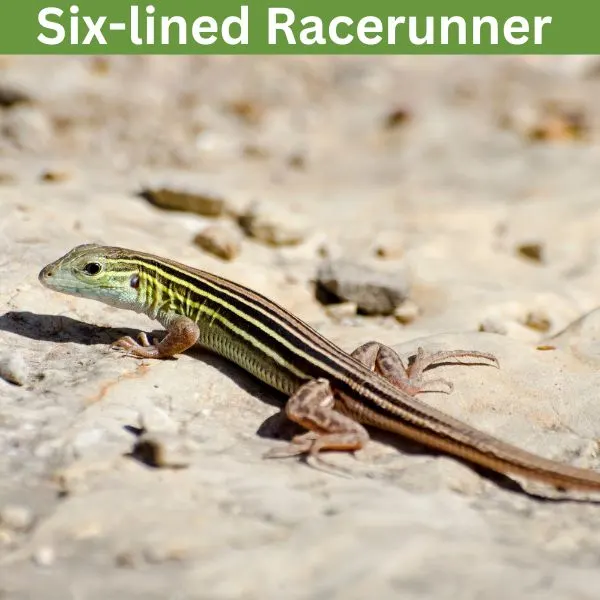
- Experience Level: Intermediate
- Family: Teiidae
- Scientific Name: Aspidoscelis sexlineata
- Other Names: Sandlapper lizard
- Adult Size: 6 to 9.5 in. (15 to 24 cm.)
- Lifespan: 4 to 5 years
- Average Price Range: $30
Six-lined racerunners are common in the southeastern and south-central regions in the United States. This species is native to Colorado, found in grasslands, woodlands, floodplains, and rocky habitats. Six-lined racerunners are very speedy, able to move up to 18 mph. (29 kmh).
This lizard gets its name from the six lines that appear running down their back. Six-lined race runners have brown, olive, or black coloring, with specks sometimes appearing on them. Their body is very slender, toes long, and their tails are very long.
Six-lined racerunners are mainly insectivores, feeding on things like grasshoppers and leaf hoppers. Fire ants are a huge predator this species faces, but other larger lizards, and birds also prey on this species. When temperatures are too hot or cold, this species will hide in its burrow.
16. Common Checkered Whiptail

- Experience Level: Advanced
- Family: Teiidae
- Scientific Name: Aspidoscelis tesselata
- Other Names: n/a
- Adult Size: 4 to 6 in. (10.16 to 15.24 cm.)
- Lifespan: 7 years
- Average Price Range: n/a
The southwestern United States is where the common checkered whiptail lives, and this lizard is native to Colorado. Active in the day, rocky, and canyon habitats is where you may find this lizard. A very common species, this lizard is active from the spring to fall months, and is mainly found in the southeastern portion of the state.
Common checkered whiptails have a slender body, with a very long tail. They have brown to black coloring, with yellow blotches covering them. This species may also have a checkered or striped pattern on them.
In the day this lizard forages for insects like termites, beetles, and grasshoppers. Rocky environments are where this lizard is associated with, and they typically breed in the summer. August is when these lizard eggs hatch, in which they lay up to 8 of them, and do not need fertilization.
17. Western Whiptail

- Experience Level: Intermediate
- Family: Teiidae
- Scientific Name: Aspidoscelis tigris
- Other Names: n/a
- Adult Size: 9.8 to 13.7 in. (25 to 35 cm.)
- Lifespan: 7 years
- Average Price Range: n/a
Western whiptails are found across the southwestern United States, and this species is native to Colorado. This lizard lives in semi-arid desert, and shrubland habitats, common in places with sparse vegetation. Western whiptails are active from April to August, and during this period they breed.
Western whiptails have a long and slender body. They have olive, tan, or brown coloring, with stripes or spots on them. The throat of adults can sometimes have pinkish, or orange coloring.
This lizard has a stable population across its range, and is listed as a species of least concern by the IUCN. Insects, spiders, and scorpions are some of the prey this lizard eats. If attacked they can drop their tails, and regrow them back, but this is only usually done in serious situations.
18. Plateau Striped Whiptail

- Experience Level: Intermediate
- Family: Teiidae
- Scientific Name: Aspidoscelis velox
- Other Names: n/a
- Adult Size: 2 to 5 in. (5 to 12.7 cm.)
- Lifespan: 7 years
- Average Price Range: n/a
The plateau striped lizard is a species native to Colorado, also found in Utah, Arizona, and New Mexico. This lizard lives in semi-arid deserts, grasslands, and open woodland habitats. Active in the day, this lizard is mostly seen in the morning, when the temperature is not as hot.
Plateau striped whiptails are a medium-sized species, with dark to black coloring. They have a slim body, with stripes running down them. When born this species has a blue tail, and their body is relatively flat. The blue tail of this species, and their lack of spots is how they can be distinguished from other whiptails.
The summer is when this species breeds, and they lay around 5 eggs, which hatch in the early fall. This species feeds on insects, and spiders. When not active they hide in places like under rocks, and logs.
Eublepharidae
19. Common Leopard Gecko

- Experience Level: Beginner
- Family: Eublepharidae
- Scientific Name: Eublepharis macularius
- Other Names: n/a
- Adult Size: 7.1 to 11 in. (18 to 28 cm.)
- Lifespan: 15 years
- Average Price Range: n/a
Geckos are one of the most invasive types of lizards, and the leopard gecko is one species that is invasive to Colorado. Common leopard geckos are native to south Asia, found in places like Afghanistan, Pakistan, and India. These geckos live in rocky areas, grasslands, and desert habitats, but in Colorado are mainly found in urban areas.
Common leopard geckos are a small species with a spotted pattern on them. They have thick tails, which are used to store fat, and are valuable energy reserves. This lizard has a yellowish, to tan coloring, with bumpy skin. This lizard is able to drop its tail, but it will grow back more stumpy.
Leopard geckos have elliptical shaped eyes that give them excellent night vision. Insects are what this species eats, and on the day when not hunting they hide into a retreat. These geckos are one of the most popular pets, which is why they have become invasive to several regions around the globe.
Gekkonidae
20. Tropical House Gecko

- Experience Level: Intermediate
- Family: Gekkonidae
- Scientific Name: Hemidactylus mabouia
- Other Names: Cosmopolitan House Gecko
- Adult Size: 5 in. (12.7 cm.)
- Lifespan: 3 to 5 years
- Average Price Range: n/a
Native to the sub-Saharna of Africa, the tropical house gecko is an invasive species that has managed to spread its population to several places around the globe. This lizard has been introduced to North America, in places like Colorado. They live in urban areas, found near homes, and warehouses.
Tropical house geckos are a small species, with light tan, brown, to creamish coloring. They are able to change their shade to better blend into their environment. Bands appear on this lizard’s tails, and they have small feet, with pads to help them climb. The yellow eyes of these lizards are large, with an elliptical shape.
Active at night, this species uses its climbing ability and excellent night vision to prey on insects. They are often found near artificial light sources, and other areas that get lots of insect traffic. The pet trade, and cargo shipments is how these lizards have made their way to Colorado, but overall they are not common.
FAQ
What is the largest lizard in Colorado?
The longnose leopard lizard when measured from its head to tail is one of the largest lizards that inhabits North America, and Colorado. This tail of this species can measure more than twice the length of its body, and they have very large heads. Longnose leopard lizards live mainly in semi-arid environments, and inhabit the western region of Colorado.
Are lizards in Colorado dangerous?
There are only two venomous lizards that inhabit Colorado which are the Mexican beaded lizard, and the gila monster, but none of these species are found in Colorado. In Colorado while some species may bite, the lizards that live in the state are typically harmless.
In Colorado are there any invasive lizards?
In Colorado the invasive lizards that have managed to make their way into the state include the common leopard gecko, and the tropical house gecko. Invasive lizards typically find their way to new areas by the pet trade, or traveling through shipments from other regions. Invasive lizards can be an issue since they take resources of native species.
Wrapping up
There are a variety of lizards that live in Colorado that can actually make a good pet, but only for some species. It is not recommended to take a lizard from the wild to keep as a pet, since most lizards from the wild can carry parasites, and diseases, but also die sooner that captive bred lizards.
Learning more about the lizards in Colorado can not only help you find one that may make a good pet, but also will make it easier for you to find, and identify them in the wild.
Lizards are important animals since they help control the population of several pest invertebrates, but also are used as a valuable food source for many animals.
Those who live in Colorado are the most important in keeping track of what type of lizards live in the state, and where their range extends to. Be sure to comment about the lizards you find in Colorado, and other information you may want to spread about them.
More lizards in nearby states
